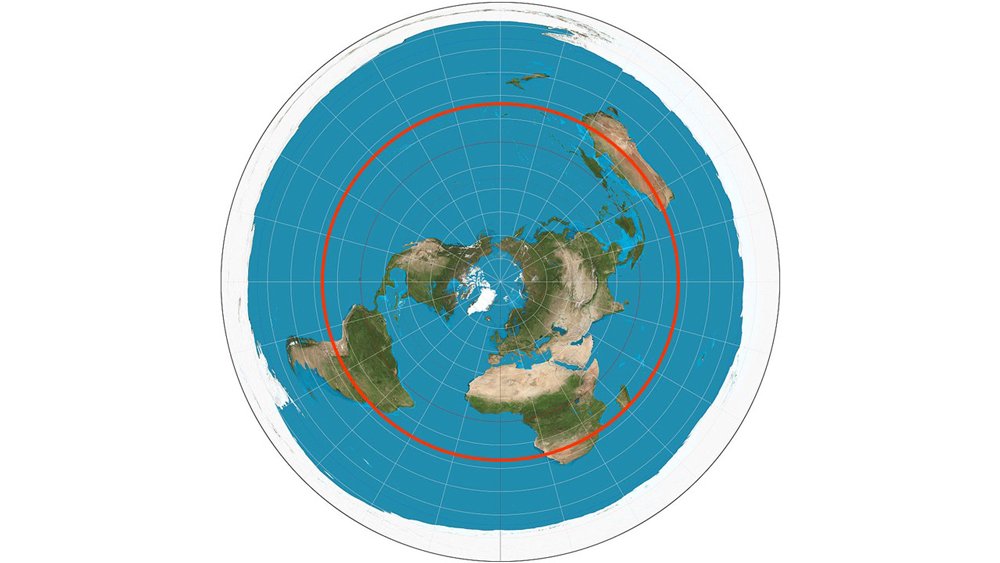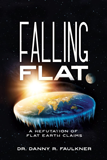
Flat Earth Fails in Solstice Predictions
We are now a little more than a month into winter. The December solstice was at 5:02 a.m. EST on December 21. I don’t particularly care for winter. Every year as we slip from autumn to winter, I get a little depressed. However, the December solstice always offers me hope. I know that for the next six months there will be an increase in the amount of daylight as nights shorten. The change will be slow at first, but it will pick up in a couple of months. However, average temperatures continue to decline for another month after the December solstice before they start a slow increase. This lag of temperatures behind the march of the seasons is called thermal inertia. Since we are now a little more than a month past the December solstice, I’m starting to get encouraged because I know that, at least on average, the temperatures are starting to get warmer.
I wrote about some of these changes associated with the December solstice more than a month ago. I mentioned that many people are surprised to learn that the sun usually doesn’t rise due east and set due west. That happens only on the equinoxes. This time of year, the sun rises well south of east and sets well south of west. And therein lies a problem for flat-earthers.
Modern flat-earthers believe the zetetic model.
How is this a problem? Modern flat-earthers believe the zetetic model. This figure shows the surface of the earth in the zetetic model. The North Pole is at the center. There is no South Pole, nor is there a continent of Antarctica. Rather, the flat, round earth is ringed by an ice wall that we usually call Antarctica. Flat-earthers don’t know how far the icy waste of Antarctica extends, nor do they care. You see, the bottom of the dome of heaven to which the stars are attached (the firmament of the King James Version of the Bible) rests somewhere beyond the ice wall. Flat-earthers think that no one can penetrate the dome, so it would be pointless to speculate where the ice of Antarctica ends. In the zetetic model, the sun circles above the earth each day around an axis passing through the North Pole. The radial distance between the North Pole and the sun changes throughout the year, with the radius being smallest on the June Solstice and greatest on the December equinox. To flat-earthers, this spiraling distance explains changes throughout the year, such as seasonal temperature differences and the amount of sunlight each day.

On this map I have placed a red circle along the tropic of Capricorn. This circle represents where the sun is directly overhead at noon on the December solstice. In the zetetic model, the circle also represents the circumference of the sun’s motion on that day (albeit at some unspecified height above the flat earth). Pick a location beyond this circle, say in southern South America, southern Africa, or southern Australia. Notice that the sun will be north of all these locations on the December solstice. For that matter, since the sun is farthest south on this date, the sun will always be north of these locations. True enough, at noon the sun will be due north at each of these locations, casting shadows that extend due south. Also notice that before noon the sun will be northeast, and after noon the sun will be northwest So, how can the sun rise south of east and set south of west at these locations? Obviously, it can’t.
Flat-earthers may object that I am lying and that timeanddate.com is giving false information too.
I’ve been to the Southern Hemisphere four times during austral summer, and I have confirmed these directions of sunrise and sunset. You can check this for yourself by using www.timeanddate.com/sun/. Pick a Southern Hemisphere location and find the sunrise and sunset information for a date between the September and March equinoxes. The times and directions of sunrise and sunset will be displayed. The angle of sunrise is expressed as azimuth, the angle measured along the horizon eastward starting from north. Therefore, azimuth between 90° and 180° is south of east, and azimuth between 180° and 270° is south of west. If you use the predictor at this website, you will find that between the September and March equinoxes, the sun rises south of east and sets south of west at all Southern Hemisphere locations (and in the Northern Hemisphere too). If you test many different dates, you will confirm that around the December solstice the sun rises its greatest south of east and sets its greatest south of west. Flat-earthers may object that I am lying and that timeanddate.com is giving false information too. However, what prompted me to write this blog was that recently I was listening to a 24/7 flat-earth program on the internet in which a flat-earther from Australia noticed sunrise and sunset directions during late spring in the Southern Hemisphere, and he didn’t understand how this could work on a flat earth. The moderator of the program used a website to look up directions of sunrise and sunset for several Southern Hemisphere locations, and he was stumped too. After a while, the moderator began entertaining odd optical effects as possible explanations. This is ad hoc, but making up complicated fixes to their zetetic model doesn’t seem to bother flat-earthers.
Their ad hoc explanations don’t work, and they certainly can’t make any quantitative predictions about sunrise and sunset that can be tested.
On the other hand, the observed direction of sunrise and sunset throughout the year is what we expect on a spherical earth that orbits the sun each year and rotates on its axis with a 23.4° tilt to its revolution axis (the conventional cosmology). Between the March and September equinoxes, The Northern Hemisphere is tilted toward the sun, which allows sunlight to shine around the northern parts of the earth. This is why sunrise is north of east and sunset is north of west worldwide then. Conversely, between the September and March equinoxes, the Southern Hemisphere is tilted toward the sun, allowing sun to shine around the southern parts of the earth, and causing the sun to rise south of east and set south of west. Again, this is true worldwide. I have used the conventional cosmology to compute time and direction of sunrise and sunset at various locations many times. My predictions closely match the observed times and directions of sunrise and sunset. I have yet to see any flat-earther make a single prediction of time and direction of sunrise or sunset. Since in the zetetic model the sun is perpetually above the flat earth, flat-earthers have to make up additional optical flimflam to even qualitatively explain how the sun only appears to rise and set while not actually rising or setting. Their ad hoc explanations don’t work, and they certainly can’t make any quantitative predictions about sunrise and sunset that can be tested.
Samuel Rowbotham, the 19th-century founder of the modern flat-earth movement, created the zetetic model to explain some celestial phenomena from the Northern Hemisphere. The zetetic explains a few things in a qualitative way, but not in a quantitative way. But the zetetic model does a poor job explaining other celestial phenomena. And the zetetic model completely derails in the Southern Hemisphere. Sunrise/sunset information is one example of the many problems that develop for the zetetic model at locations progressively farther from the North Pole. I’ve said many times that anyone who is familiar with aspects of the sky couldn’t possibly believe the earth is flat. That is particularly true for anyone living in the Southern Hemisphere. There is so much about the Southern Hemisphere that the zetetic model gets wrong or simply can’t explain. I have difficulty understanding how anyone living in the Southern Hemisphere can believe the earth is flat.
Recommended Resources

Answers in Genesis is an apologetics ministry, dedicated to helping Christians defend their faith and proclaim the good news of Jesus Christ.
- Customer Service 800.778.3390
- © 2024 Answers in Genesis




